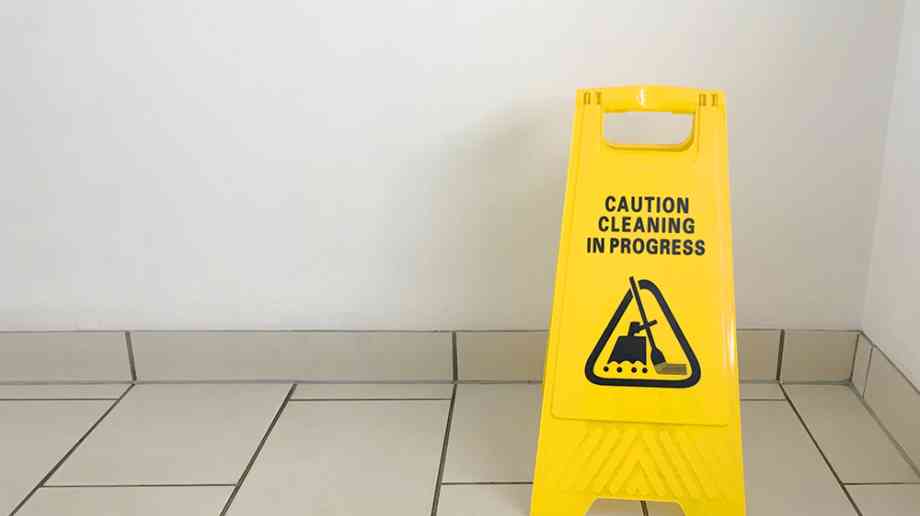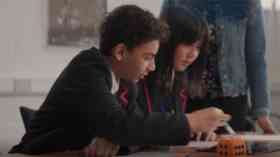
Cleaning to provide a safe and hygienic environment
Childhood illnesses can spread faster in educational environments, particularly amongst younger children. It is therefore crucial to ensure a clean, hygienic and safe environment for all, writes IOSH’s Carina Kennedy
Managing common childhood illnesses, in addition to more recent widespread illnesses across the UK such as COVID-19, Scarlet Fever and Strep A, should form part of a business as usual approach in any educational setting.
It is crucial to ensure a clean, hygienic and safe environment is available to all users at all times. This is particularly important given childhood illnesses can spread faster in educational environments, particularly amongst younger children who may not understand how the actions they take could increase or reduce the spread of germs.
Childhood illnesses are common because micro-organisms such as bacteria, viruses, fungi, and parasites – more commonly known as germs – are everywhere and will often be acquired outside of the educational setting and then spread in the setting through varying modes of transmission. There are multiple modes of transmission of such germs and understanding them can unlock the key to effective control measures to reduce the spread.
Airborne transmission
Germs that are airborne can spread without close contact. Sneezing, coughing, singing, and talking may spread respiratory droplets (aerosols) from an infected person to someone close by.
Droplets from the mouth or nose may also contaminate hands, cups, toys and high touch points. This in turn can the spread to those who may use or touch such items and/or touch points, particularly if they then touch their nose or mouth. The common cold, COVID-19, influenza/flu and whooping cough are all example of illnesses which can be spread via respiratory droplets.
Direct contact transmission
The most common mode of transmission is direct contact, where an infection spreads with direct contact such as via body contact or via a contaminated surface. Examples of infections of the skin, mouth and eye that are spread in this way are impetigo, ringworm and COVID-19.
Gastro-intestinal infections, for example norovirus, can spread from person to person when infected faeces or vomit are transferred to the mouth either directly or from contaminated food, water, or objects such as toys, door handles, handrails or toilet flush handles.
COVID-19, Scarlet Fever and Strep A can all be spread by both airborne and direct contact transmission. This could be through an infected person’s coughs and sneezes, through touching the skin of a person with a Streptococcal skin infection, such as impetigo, and/or by sharing contaminated towels, baths, clothes or bed linen.
In some people, bacteria live in the body without causing symptoms or making them feel unwell. But they can still pass the bacteria on to others.
Exclusion and outbreaks
An exclusion table is available via the UK Health Security Agency website for settings to refer to in terms of understanding the period of time an infected person should remain at home when they have symptoms of common illness.
Following this guidance is fundamental in managing the spread of infections. The exclusion table may also provide advice and guidance on cleaning, which is a key control measure in reducing the spread of illness.
During outbreaks of illnesses, settings should follow their local Public Health Team advice – see www.gov.uk/health-protection-team – to ensure that the management controls in place, including cleaning schedules, are deemed to be effective for the level of outbreak.
Additionally, educational settings should consider having an Outbreak Management Plan which will determine key actions to take quickly, such as enhanced cleaning, removing toys and items temporarily, reducing the number of people who have contact. Control measures will vary between age groups and the level of outbreak, however being prepared and ready ensures quick decisive action can be taken.
Types of cleaning
The most significant role that cleaning can play in an educational setting is to work towards routinely keeping the risk of infection low and breaking the chain of infection where infection does enter a setting.
Settings should have in place a cleaning schedule which is undertaken on a daily basis. How much cleaning and where cleaning needs to be done should be determined through risk assessment considering the age of the children, the types of infection commonly noted in the setting, the times the setting is open, the activities undertaken and the amount of public interaction particularly with parents/carers, external educational advisors and contractors.
During outbreaks of illnesses, particularly those which are spread through direct contact, enhanced cleaning and deep cleans may be required. Such schedules will require more frequent cleaning and an increased focus on high touch points such as door handles, keypads, door entry systems, taps, fridge doors etc. where multiple people are touching a surface in the same area.
Deep cleans are even more extensive and look at all areas over and above the routine cleaning schedule with the intention of ensuring that no stone is left unturned when attempting to stop the spread of infection. It can include skirting boards, windows, doors, toys – soft toys being washed in a machine, hard toys, bathroom areas including toilets, sinks and floors and the whole classroom area in terms of floors and furniture being disinfected.
Health and safety considerations
Cleaning activities in educational settings are often contracted out and provided by a third party cleaning contractor. Where cleaning is provided by an external contractor, settings must ensure that the relevant health and safety documentation has been shared between parties to provide assurance that the relevant health and safety compliance is in place before work commences.
Whether the cleaning is contracted in or out, the same areas of health and safety should be considered by an educational setting to ensure compliance.
Educational settings must ensure that those undertaking cleaning tasks have been suitably trained in their job role including an induction and, where required, specific health and safety training ensuring that it is recorded and refreshed at appropriate intervals. Such training should include knowing the location of fire routes and assembly points and how to raise the alarm, and measures to support lone workers including the opening and closing routine where cleaners are the first and last to enter buildings. Training should also cover the appropriate uniform and footwear for cleaning activities; accident and incident reporting procedures; first aid provision; and how to clean blood and bodily fluids safely.
Training should also cover using equipment safely including visual checks before use; how to manage waste and considerations for hazardous waste where applicable; and how to use cleaning products safely. There should also be training on how to work from height safely, if required, including the use of foot stools and step ladders; and how to practice safe manual handling.
It should also cover how to manage slips and trips risks from wet/polished floors and/or trailing cables and how these can be managed including the use of wet floor signs, appropriate footwear for cleaners, choosing plug sockets carefully to reduce the area cables need to cross and cordoning off large areas of flooring and allowing them time to dry.
There also needs to be knowlege on what PPE is required for their role and how to use
and store this safely; and any site specific risks that the cleaners will need to be aware of including unauthorised access areas and areas of higher risk.
Risk assessments, method statements and COSHH (Control of Substances Hazardous to Health) assessments should also be in place and shared with those undertaking cleaning activities to ensure that they undertake tasks safely, including how to use machinery and cleaning equipment safely where applicable.
Educational settings must ensure that any equipment used has been serviced in accordance with manufacturer guidelines. Consideration should also be given to using non-hazardous cleaning products to reduce the need for COSHH assessment and PPE which in turn will support the individual cleaner’s health in addition to being more environmentally friendly.
For further guidance and information in managing childhood illness and cleaning activities safely, the UKHSA, the HSE and DfE websites which have all produced resources which can further support educational settings.
Carina Kennedy is a committee member of the Institution of Occupational Safety and Health (IOSH) Education Group, and head of health and safety at Bright Horizons Family Solutions.
Further Information:Latest News
08/01/2026 - 10:30
The government is launching a new app allowing students to view their GCSE results on their phones for the first time from this summer.
08/01/2026 - 09:45
Education Business LIVE has announced that Professor Samantha Twiselton OBE of Sheffield Hallam University will speak at the event in March 2026, delivering two thought-provoking sessions focused on initial teacher training and SEND provision.
07/01/2026 - 10:10
Solve for Tomorrow is a free, curriculum-linked programme which is mapped to Gatsby Benchmarks 4, 5, and 6, helping teachers embed careers education without adding to workload.
06/01/2026 - 10:24
London's universal free school meals programme has not led to improvements in pupil attainment during its first year, but has eased financial pressure and reduced stress for families.
05/01/2026 - 10:44
New regulations have come into force from today, banning adverts for unhealthy food and drinks before 9pm, and online at all times.







